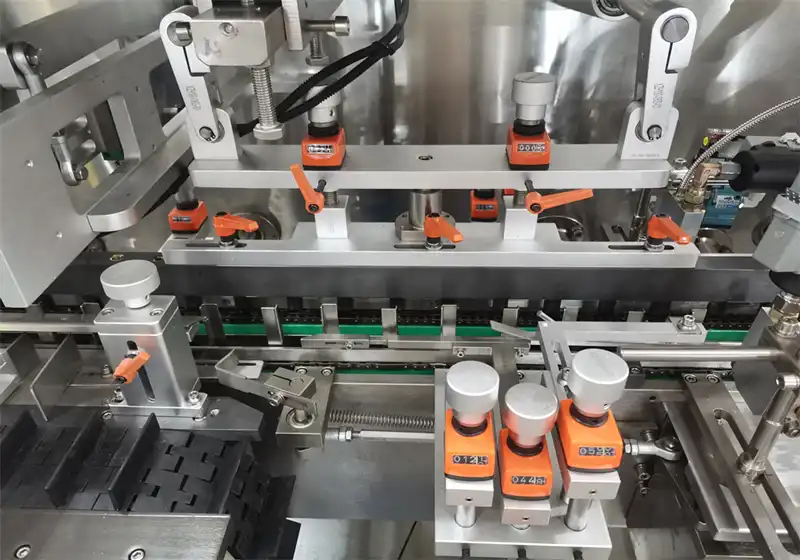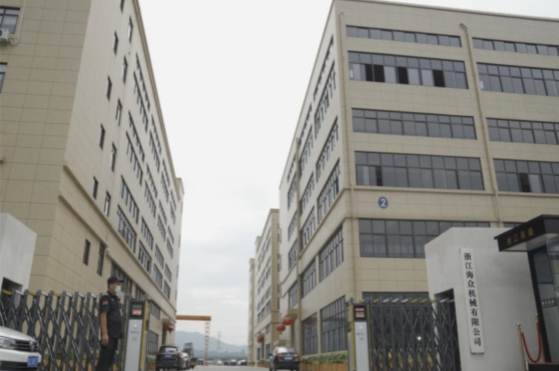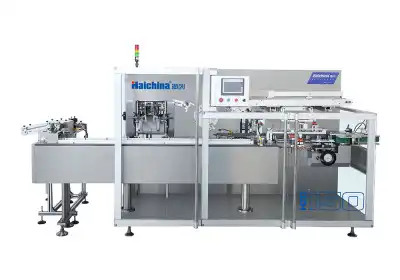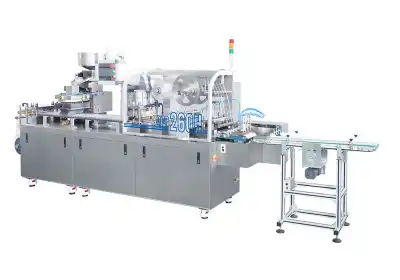Blister Packing Machine Maintenance Tips for Longevity
Blister packaging machines are essential equipment in various industries, including pharmaceuticals, cosmetics, and consumer goods. To ensure optimal performance and extend the lifespan of these valuable assets, proper maintenance is crucial. Regular upkeep not only enhances efficiency but also reduces downtime and repair costs. This comprehensive guide will explore key maintenance strategies for blister packing machines, offering insights into preventive measures, cleaning techniques, and troubleshooting common issues. By implementing these tips, manufacturers can maximize the longevity of their blister packaging equipment and maintain consistent production quality.

Essential Preventive Maintenance Practices
Routine Inspections and Checks
Implementing a systematic approach to machine inspections is paramount for identifying potential issues before they escalate. Begin by establishing a regular schedule for thorough examinations of all components. This includes scrutinizing sealing plates, forming tools, and cutting mechanisms for signs of wear or damage. Pay close attention to electrical connections, ensuring they remain secure and free from corrosion. Additionally, monitor hydraulic and pneumatic systems for leaks or pressure irregularities. By maintaining detailed records of these inspections, operators can track the machine's performance over time and anticipate when parts may need replacement.

Lubrication Management
Proper lubrication is the lifeblood of any mechanical system, and blister packaging machines are no exception. Develop a comprehensive lubrication schedule that accounts for all moving parts, including bearings, gears, and chains of the blister packaging machine. Use high-quality lubricants specified by the manufacturer to ensure optimal performance and longevity. Pay special attention to areas exposed to high temperatures or frequent motion, as these may require more frequent lubrication. Implement a system for tracking lubrication activities to prevent over-greasing or neglect of critical components.

Calibration and Alignment
Maintaining precise calibration and alignment is crucial for producing consistent, high-quality blister packs. Regularly check and adjust the alignment of forming tools, sealing plates, and cutting mechanisms. Utilize specialized gauges and tools recommended by the manufacturer to ensure accuracy. Pay particular attention to the synchronization of various machine elements, as even slight misalignments can lead to subpar packaging or increased wear on components. Consider implementing a digital calibration system to streamline this process and maintain detailed records of adjustments made over time.

Cleaning and Sanitization Protocols
Daily Cleaning Routines
Establishing a rigorous daily cleaning regimen is essential for maintaining the hygiene and efficiency of blister packaging machines. Begin each shift by removing any debris or product residue from the previous production run. Use appropriate cleaning agents and tools to wipe down surfaces, paying special attention to areas that come into direct contact with packaging materials or products. Implement a color-coded system for cleaning tools to prevent cross-contamination between different areas of the machine. Train operators on proper cleaning techniques and the importance of maintaining a clean work environment.
Deep Cleaning Procedures
While daily cleaning is crucial, periodic deep cleaning sessions are necessary to address hard-to-reach areas and stubborn buildup. Schedule comprehensive cleaning sessions during planned maintenance downtime. Disassemble key components such as forming tools and sealing plates for thorough cleaning and inspection. Utilize specialized cleaning solutions designed for use in pharmaceutical or food-grade environments, ensuring they are compatible with the machine's materials. Pay particular attention to areas prone to product accumulation, such as conveyor belts and transfer mechanisms. Document the deep cleaning process and findings to inform future maintenance activities.
Sanitization Best Practices
In industries with strict hygiene requirements, such as pharmaceuticals and food packaging, proper sanitization of blister packing machines is paramount. Develop a sanitization protocol that complies with industry regulations and standards. Use approved sanitizing agents that effectively eliminate microorganisms without damaging machine components. Consider implementing UV sterilization or other advanced sanitization technologies for areas that are difficult to access manually. Train personnel on proper sanitization techniques and the importance of maintaining a sterile production environment. Regularly validate the effectiveness of sanitization procedures through microbial testing and adjust protocols as needed.
Troubleshooting and Performance Optimization
Common Issues and Solutions
Even with diligent maintenance, blister packing machines may encounter operational issues. Equip operators and maintenance staff with knowledge of common problems and their solutions. For instance, irregular sealing patterns may indicate worn sealing plates or improper temperature settings. Inconsistent blister formation could be due to issues with the forming tool or material feed system. Develop a comprehensive troubleshooting guide that outlines step-by-step procedures for diagnosing and resolving these issues. Encourage operators to report any unusual machine behavior promptly to prevent minor problems from escalating into major breakdowns.
Performance Monitoring and Analysis
Implementing a robust performance monitoring system is crucial for optimizing blister packing machine efficiency. Utilize advanced sensors and data collection tools to track key performance indicators such as production speed, seal integrity, and material waste. Analyze this data regularly to identify trends and potential areas for improvement. Consider implementing predictive maintenance technologies that use machine learning algorithms to anticipate potential failures before they occur. By leveraging data-driven insights, manufacturers can make informed decisions about maintenance schedules and process optimizations.
Continuous Improvement Strategies
Adopting a culture of continuous improvement is essential for maximizing the longevity and efficiency of blister packaging equipment. Encourage operators and maintenance staff to share their observations and suggestions for enhancing machine performance. Conduct regular review meetings to discuss maintenance practices and identify areas for refinement. Stay informed about technological advancements in blister packaging machinery and evaluate potential upgrades that could improve efficiency or reduce maintenance requirements. By fostering a proactive approach to equipment management, manufacturers can ensure their blister packing machines remain at the forefront of productivity and reliability.
Conclusion
Implementing a comprehensive maintenance strategy for blister packing machines is crucial for ensuring their longevity and optimal performance. By adhering to rigorous preventive maintenance practices, following proper cleaning and sanitization protocols, and addressing issues promptly through effective troubleshooting, manufacturers can significantly extend the lifespan of their equipment. Continuous monitoring and improvement efforts further enhance efficiency and reliability. Ultimately, a well-maintained blister packaging machine not only reduces operational costs but also ensures consistent product quality, meeting the demanding standards of industries such as pharmaceuticals, cosmetics, and consumer goods.
Contact Us
For more information on our state-of-the-art blister packaging machines and expert maintenance services, please contact Zhejiang Haizhong Machinery Co.,Ltd. at [email protected]. Our team of specialists is ready to help you optimize your packaging operations and achieve unparalleled efficiency.
References
Johnson, A. (2022). Advanced Maintenance Strategies for Pharmaceutical Packaging Equipment. Journal of Packaging Technology and Research, 15(3), 267-284.
Smith, R. & Lee, K. (2021). Optimizing Blister Pack Machine Performance: A Comprehensive Guide. Industrial Machinery Quarterly, 42(2), 118-135.
Thompson, E. et al. (2023). Predictive Maintenance in Pharmaceutical Packaging: Case Studies and Best Practices. Pharmaceutical Engineering Review, 31(4), 502-518.
Garcia, M. (2022). Sanitization Protocols for Food-Grade Packaging Equipment: Ensuring Safety and Compliance. Food Safety Magazine, 28(3), 45-52.
Li, W. & Chen, H. (2023). Data-Driven Approaches to Packaging Machine Maintenance: A Review. Journal of Smart Manufacturing, 19(2), 178-195.
Brown, T. (2021). The Impact of Regular Calibration on Blister Pack Quality: A Longitudinal Study. Packaging Science Today, 37(1), 83-99.

Submit the form now to get a unique quote!

ZHEJIANG HAIZHONG MACHINERY CO., LTD.
Popular Blogs
-
 Successful caseProducts and services
Successful caseProducts and servicesHow to Train Employees to Operate a Bottle Packing Machine Effectively?
-
 Successful caseIndustry insights
Successful caseIndustry insightsThe Blister Packaging Process: A Complete Step-by-Step Guide
-
 Successful caseComparative analysisIndustry insights
Successful caseComparative analysisIndustry insightsWhat Type of PVC Is Best for Blister Packing Machines?